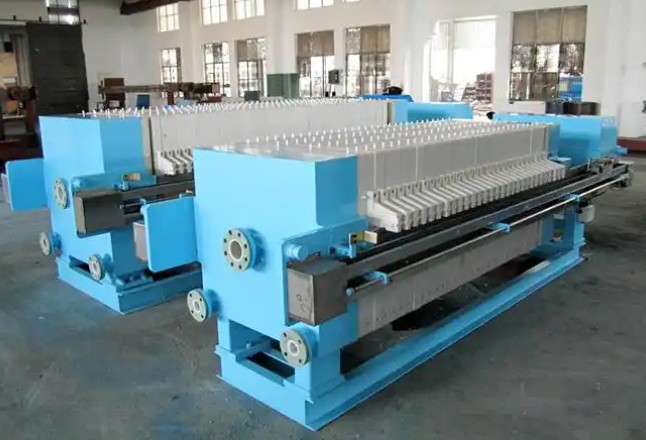NEWS&EVENTS
Home > News&Events > Company news > Specific applications of filter presses in electrolytic antimony production
In the electrolytic refining process for producing refined antimony, the filter press is a crucial solid-liquid separation device. Its main tasks are to process anode mud and purify the electrolyte, ensuring the stability of the electrolysis process and the quality of the final product (cathode antimony).

I. Anode Sludge Filtration and Recovery:
Source: During electrolysis, antimony dissolves in the crude antimony anode plate, and insoluble impurities (such as arsenic, lead, etc.) fall off as fine suspended particles, forming anode mud.
Function: After the electrolyte flows out of the electrolytic cell, the anode mud is separated from the electrolyte using a filter press.
Objectives: First, to recover valuable metals. Anode mud is rich in precious metals and valuable elements, which can be processed and recycled after filtration to generate economic benefits. Second, to prevent short circuits and pollution. If not removed in time, anode mud deposited on the cathode will reduce the quality of antimony on the cathode and may even cause short circuits between electrodes.
II. Electrolyte purification and filtration:
Source: After the anode mud is separated, the electrolyte may still contain extremely fine suspended matter or crystals.
Function: To finely filter the circulating electrolyte using a filter press, ensuring that the electrolyte entering the electrolytic cell is clear.
Objectives: First, to ensure the quality of antimony cathodes, as pure electrolyte is key to producing high-purity (usually above 99.85%) antimony cathodes; second, to maintain the stability of the electrolysis process, as clean electrolyte has low resistance and high energy efficiency, which can reduce electrode side reactions.
In antimony electrolysis production, filter presses are far more than just simple "filtration" equipment; they are a core link connecting the electrolysis process with product quality, resource recovery, and environmental compliance. Selecting a suitable, efficient filter press and its supporting systems is of irreplaceable importance for improving the quality of refined antimony, increasing metal recovery rates, reducing operating costs, and achieving cleaner production.